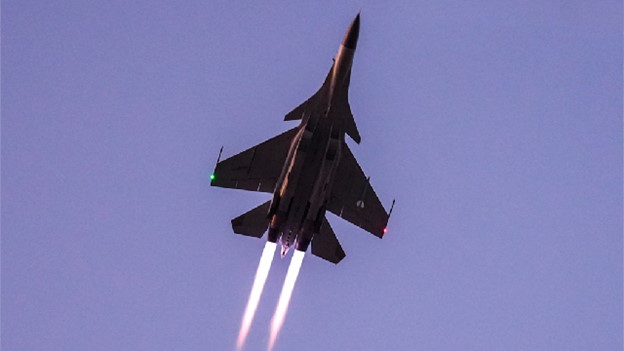President Biden’s national security negligence is stunning.
As America’s adversaries, including China, Russia, Iran, North Korea and terrorist-related criminal cartels increase their power, influence and aggression, the current administration is actually reducing the nation’s military.
Rep. Mike Rogers (R-AL), Chairman of the House Armed Services Committee, worries that “The defense topline [White House budget] number fails to keep pace with inflation and our adversaries…our defense budget should be built with the goal of deterring the threats facing our nation … I worry about the long-term impact this budget process will have on our national defense.”
A Wall Street Journal analysis notes that President Biden “has again proposed a vastly inadequate Defense Department budget…Adjusted for inflation, it’s about $140 billion below the 2010 budget that many analysts… insufficient in far less challenging times… advantage over potential adversaries has been shrinking rapidly. We must do better if we are to deter our enemies…U.S. defense spending has never returned to that 2010 level…The cumulative funding gap since 2010 totals about $2 trillion in the shortfall has still battered the military’s capabilities… only 70% of combat aircraft are mission-ready. The Navy is retiring a submarine every two years, while China, which already has the world’s largest navy, recently deployed advanced subs that can run silent.”
Collectively and individually, the armed forces are in significant distress.
The Hill reports that “As recently as 2018, Army planners called for growing the force by 2023. Today the service is unable to even maintain current force levels. Last year the Army set an active-duty end strength target of 485,000 troops. Due to recruiting shortfalls, Congress lowered the target by 33,000 for 2023. The Army is saying it will miss this lower goal too.”
According to the Air Force Times, “The Air Force in 2024 plans to shrink its uniformed force, but not by much. In the year ahead, the service hopes to number 502,700 enlisted airmen and officers across the active duty Air Force, Air National Guard and Air Force Reserve — about 1,000 fewer uniformed jobs than in 2023…”
While the USAF shrinks, the publication also reports that “Air Force Gen. Gregory M. Guillot, the new head of the North American Aerospace Defense Command and U.S. Northern Command, warned lawmakers that Chinese warplanes could begin operating near the U.S. Air Defense Identification Zone (ADIZ) as soon as this year…At the same time, Chinese surveillance balloons have entered U.S. airspace five times in recent years, with the Pentagon missing several at the time they occurred…”
Mackenzie Eaglen, in an American Enterprise Institute analysis notes that the U.S. Navy is about half the size it was 40 years ago, and is getting smaller even as China, which already has a larger navy, is expanding its seagoing forces… Chief of Naval Operations Adm. Lisa Franchetti recently emphasized, Failure to reverse the fleet’s decline is emboldening America’s enemies and will only get more costly the longer they keep at it.”
Business Insider notes the challenge is particularly acute in the Arctic. “US Air Force Gen. Gregory M. Guillot, the commander of US Northern Command and North American Aerospace Defense Command, said [recently] that the US currently has really only one heavy icebreaker ship for Arctic operations while Russia has approximately 40 available.”
The War Zone website emphasizes that “…there is a “worrisome disparity between Chinese and U.S. capacity to build new naval vessels and total naval force sizes. The data compiled by the Office of Naval Intelligence says that a growing gap in fleet sizes is being helped by China’s shipbuilders being more than 200 times more capable of producing surface warships and submarines.”
Photo: China Defence Ministry
